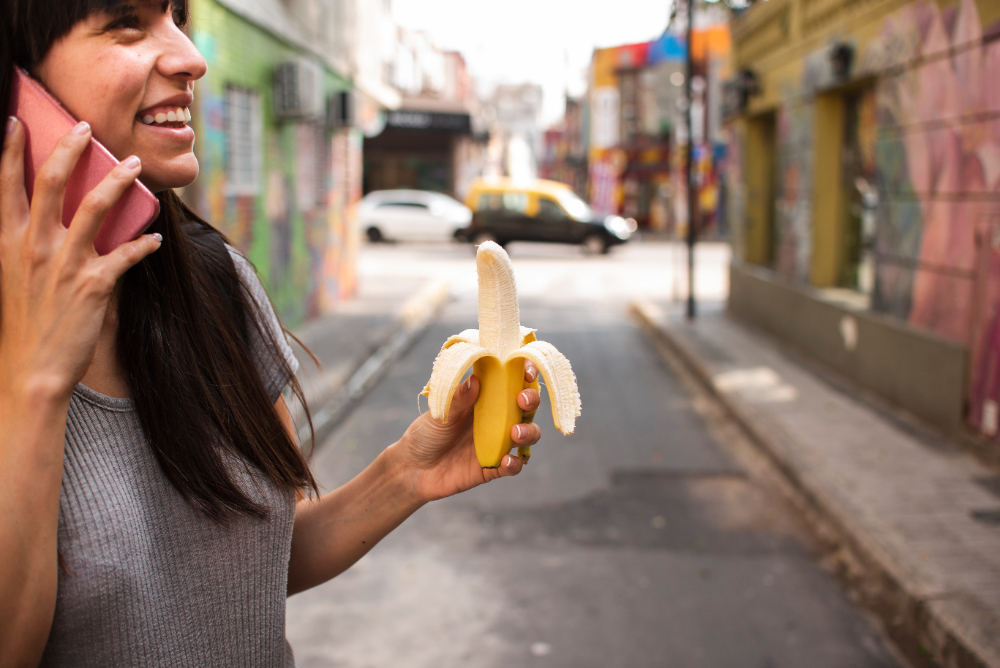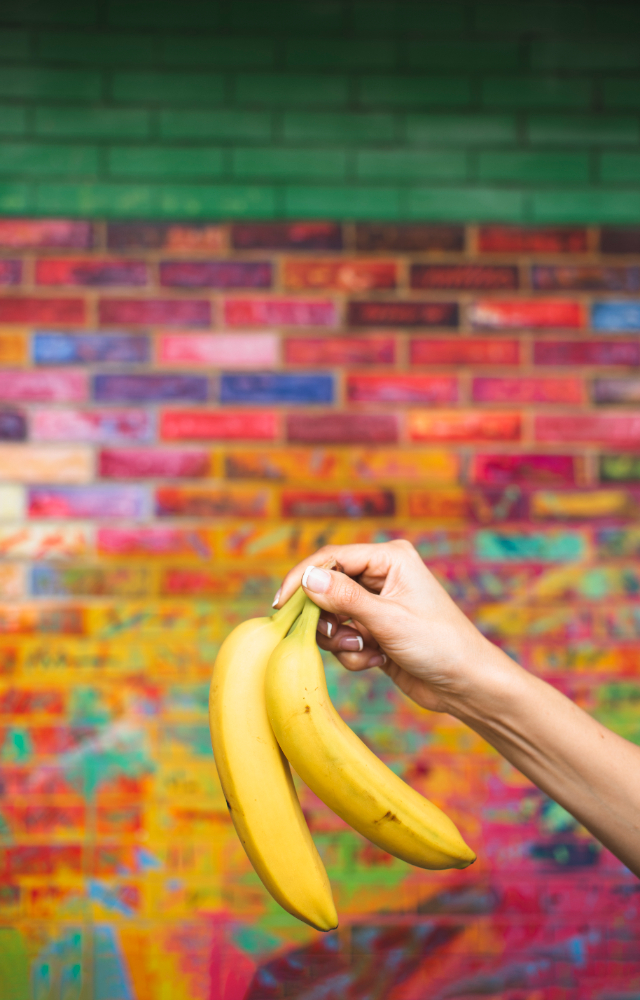Banana global communication are a common fruit in households worldwide. You likely have one sitting in your kitchen or perhaps even as part of your breakfast.
But did you know that the banana has grown to become more than just a healthy snack? In fact, it has many surprising uses and benefits beyond just being a tasty treat. Over the years, it has evolved into a global icon in communication—one that transcends language, culture, and geography.
From pop culture references to emojis, the banana has solidified its place as a symbol of humor, fun, and even a little cheekiness.
But how did this simple fruit go from a nutritious snack to an international communication tool? Let’s peel back the layers and explore how the banana became an icon in global communication.

The Universal Appeal of Bananas
Bananas have one key feature that has helped them become a global symbol: they are universally accessible.
From the farthest corners of the world to your local grocery store, bananas are one of the most widely consumed fruits on the planet.
Whether in Asia, Africa, Europe, or the Americas, bananas are a part of daily life. In fact, they are enjoyed by people all around the world, making them one of the most widely consumed fruits globally.
Why Does This Matter?
In the world of global communication, it’s essential to use symbols or objects that are universally recognized.
The banana’s widespread presence means that no matter where someone is from, they likely have some level of familiarity with the fruit.
This makes bananas an ideal visual tool for conveying messages in an easily understandable and relatable way.
Bananas in the Global Economy
The banana’s role in the global economy is another reason for its ubiquity. It’s one of the most traded fruits in the world, a staple in many countries, especially in tropical regions where it’s grown.
Its ease of cultivation and transportation has allowed it to spread far beyond its place of origin.
Countries like Ecuador, Costa Rica, and the Philippines have turned banana exports into a multi-billion-dollar industry, bringing this simple fruit into the homes of billions.
This global reach makes the banana an instant point of reference for people from all walks of life, especially in marketing and communications.
or example, an ad showing a banana might immediately convey a sense of simplicity and global familiarity, creating an instant connection with a diverse audience.
The Role of Bananas in Pop Culture
Bananas have played a significant role in entertainment, humor, and visual storytelling.
From slapstick comedy to animated films, the banana has appeared in various forms, often symbolizing humor, lightheartedness, and sometimes even absurdity.
The Banana Peel Slip: Slapstick Comedy
One of the earliest—and most enduring—images of a banana in popular culture is the classic banana peel slip.
This trope became a hallmark of slapstick comedy during the early 20th century.
From Charlie Chaplin to the Three Stooges, many comedians used the banana peel as a prop to generate laughs.
This comedic use of the banana peel helped cement the fruit’s association with humor. It became a symbol of an unexpected event, a silly accident, or a moment of chaos.
The banana peel slip has remained a staple in comedy ever since. It’s so ingrained in our collective consciousness that even today, the phrase “slipping on a banana peel” can be used metaphorically to describe a clumsy mistake.
Minions and Modern Pop Culture
In more recent years, the banana has been revived in mainstream culture through the Despicable Me movies.
The film’s mischievous, yellow, and cartoonish characters, the Minions, have a deep love for bananas.
They’re frequently seen munching on the fruit or using it as a prop to generate laughter.
The Minions’ obsession with bananas is a humorous exaggeration, but it has helped to reinforce the idea that bananas represent silliness and fun.
Their playful interactions with bananas have made the fruit a symbol of light-heartedness and humor in today’s pop culture.
The Minions have become so synonymous with bananas that it’s hard to imagine one without the other.
The Banana as a Symbol in Global Communication
While bananas are clearly a part of pop culture, they’ve also become symbols used in modern communication, particularly in the digital world.
The banana emoji is a perfect example of how this humble fruit has found a place in everyday conversations online.
Banana Emoji: A Digital Conversation Staple
In the age of digital communication, emojis have become one of the most widely used tools to express emotions, ideas, and even actions.
The banana emoji is used across social media platforms, messaging apps, and even in emails to convey playful, humorous, or lighthearted messages.
Whether it’s to represent the fruit itself or to add an extra layer of fun to a conversation, the banana emoji has become one of the most recognizable and popular symbols in online communication.
Think about how many times you’ve seen or used the banana emoji in a conversation. Maybe you’ve sent it to a friend while joking around or used it in a tweet to make a light-hearted point.
The banana emoji transcends language barriers, conveying a sense of fun and playfulness that almost anyone can understand.
Banana as a Metaphor
The banana’s role in communication isn’t just limited to its literal appearance. It’s also used metaphorically in conversations.
For example, the phrase “going bananas” is a widely understood expression meaning someone is acting out of control or getting overly excited.
This expression uses the banana as a metaphor for something unexpected or silly. It’s also used to describe someone acting in a way that’s over-the-top or exuberant.
The idea is that, like a banana being peeled or squished, emotions can sometimes get messy or chaotic.
This metaphorical use of the banana has made it an effective tool in everyday conversation.
Bananas in Memes and Humor
Memes are another area where the banana has made a significant impact. Memes are all about capturing the essence of a funny or relatable moment, and bananas are perfect for this.
From absurd images of people posing with bananas to cleverly captioned pictures about the fruit, memes often use bananas to convey humor or poke fun at something.
For example, you might have seen memes where a banana is used to represent something out of place or unexpected.
It’s a clever way of using a familiar object to express an idea in a humorous, visual format. Banana global communication are also commonly featured in memes about healthy eating, with people joking about the fruit’s ability to energize or brighten up a dull day.
Bananas in Advertising: A Marketing Powerhouse
Bananas have also made their way into advertising, where they’re often used to convey a message of health, simplicity, and joy.
The fruit’s bright color and easy-to-recognize shape make it a perfect fit for ads aiming to catch the viewer’s attention and deliver a quick message.
Bananas and Health Marketing
Bananas have long been associated with health and fitness. Their high potassium content makes them a staple for athletes and health-conscious individuals.
Many ads for health products or snacks feature bananas to emphasize a message of natural energy and nourishment.
For example, a commercial for a smoothie or protein bar might show a banana as a key ingredient, highlighting its health benefits.
The banana’s ability to deliver quick energy and nourishment has made it an ideal fruit for brands targeting people who want to stay healthy and energized. In this context, the banana becomes more than just a fruit; it’s a symbol of vitality and wellbeing.
Bananas as Fun and Playful Marketing
On the flip side, banana global communication are also used in marketing campaigns to convey a sense of fun and enjoyment.
Take the iconic ads for Banana Republic, for instance. The brand has used the fruit in various campaigns, often blending it with images of adventure and casual chic fashion.
By using bananas in this playful context, the brand taps into the banana’s association with enjoyment and carefree moments.
Bananas are also featured in ads for snacks and fast food, where their lighthearted connotations are used to appeal to a younger, more fun-loving audience.
In these campaigns, the banana serves as a symbol of simplicity and enjoyment, something that can be easily integrated into the daily routine.
The Banana’s Role in Language Evolution
The banana’s reach goes beyond just being a symbol in visual media. It has become a part of the ever-evolving language we use to communicate.
Over time, new phrases and expressions related to bananas have entered common usage, further solidifying the fruit’s place in global communication.
New Phrases and Expressions
Over the years, phrases like “bananas for you” (meaning someone has a strong affection or attraction) or “banana split” (a metaphor for something being divided or torn apart) have entered everyday speech.
These idiomatic expressions help to show how bananas have transcended their status as just a fruit, becoming an essential part of how we talk about emotions, relationships, and even situations.
Banana as a Symbol of the Everyday
Perhaps one of the most interesting things about the banana is its status as an everyday object that communicates a wide range of emotions and ideas.
It’s not just an exotic fruit; it’s a symbol of the ordinary, the familiar, and the accessible.
This makes the banana a great tool for communicating ideas in a simple and straightforward way.
Banana global communication in Modern : Moving Forward
As we look toward the future, the banana will likely continue to play a role in global communication.
Whether through new expressions, memes, or digital content, the banana remains a timeless symbol.
Its cultural impact continues to evolve as it adapts to new technologies and mediums.
Bananas and Emerging Platforms
In today’s world, platforms like TikTok and Instagram are prime examples of where the banana’s playful and humorous characteristics continue to thrive.
Whether through challenges, viral videos, or creative content, the banana is sure to remain a key symbol in online communication.
Its simplicity and versatility make it a favorite choice for creators looking to engage with audiences in an accessible way.
Bananas in the Future of Digital Communication
As new forms of communication continue to emerge, such as augmented reality (AR) and virtual reality (VR), the banana may take on new roles as a symbol in those spaces.
It’s possible that we’ll see the banana used in virtual worlds or even integrated into interactive experiences that use humor and fun as their core elements.
Bananas and Sustainability: A Symbol for Eco-Conscious Communication
As environmental awareness becomes a central theme in global communication, bananas are also beginning to take on a role in promoting sustainability.
The banana’s cultivation, distribution, and consumption are areas where the fruit has both positive and negative environmental impacts, and its story reflects broader conversations about food sustainability and responsible consumption.
Bananas and the Sustainability Movement
Bananas are one of the most important crops in terms of global food security. They are a reliable and accessible source of nutrition for millions around the world, particularly in developing countries.
However, the banana industry is also a major player in environmental debates, with concerns about deforestation, pesticide use, and labor practices.
The rise in environmental and ethical consumerism has shifted the way people view bananas.
Sustainable farming practices, such as fair-trade certifications and organic banana options, have become a part of the conversation.
As consumers grow more conscious of the environmental and social impact of their food choices, bananas are often used as a symbol in campaigns that promote responsible, eco-friendly, and fair-trade agriculture.
Bananas in Eco-Friendly Advertising
Many brands that focus on environmental consciousness, like those promoting plant-based diets or eco-friendly packaging, frequently use bananas in their marketing to highlight natural, sustainable living.
By aligning themselves with bananas, these brands tap into the fruit’s association with being simple, wholesome, and easy to incorporate into a sustainable lifestyle.
For example, an eco-conscious brand might use a banana in an ad campaign promoting plant-based snacks or green living.
The banana, with its bright yellow peel and natural appeal, becomes a symbol of sustainability and care for the environment.
It serves as a visual shorthand for a healthy, planet-friendly lifestyle that many consumers aspire to embrace.
Bananas in Education: Fun, Informative, and Engaging
The banana’s popularity isn’t confined to pop culture and advertising—it’s also found a place in educational settings.
Teachers and educators worldwide use bananas as a way to engage students in science, math, and nutrition lessons.
Whether it’s a lesson about the biology of plants or a fun math activity involving counting bananas, the fruit helps make learning more accessible and enjoyable for kids.
Bananas as a Teaching Tool
In science classes, bananas are often used to teach students about plant biology. The way bananas grow, their stages of ripening, and the process of pollination can all be explored through hands-on activities.
Bananas’ simple structure makes them easy to dissect, both literally and figuratively.
A lesson about bananas can cover topics ranging from plant biology to geography, as bananas are grown in tropical regions all over the world.
Math teachers also often use bananas in visual lessons. For example, students can use bananas to practice counting or fractions by slicing them up.
A simple activity like dividing a banana into halves or quarters can help children understand mathematical concepts in a fun, tangible way.
Bananas as a Symbol of Healthy Eating
In nutrition education, bananas are often used to teach children about the benefits of eating fruits and vegetables.
Because they are readily available, affordable, and delicious, bananas make a perfect example of a healthy snack.
Schools often include bananas in healthy eating campaigns or offer them in meal programs to encourage children to make better food choices.
Moreover, in health education campaigns, bananas are often used to explain the importance of potassium and the role that fruits and vegetables play in maintaining a balanced diet.
The banana serves as a simple but effective way to communicate key messages about good nutrition, especially when encouraging younger generations to adopt healthier eating habits.
The Banana as a Cultural Icon: Symbolism Across the World
While the banana is widely recognized and consumed globally, its symbolic meaning can vary across cultures.
In some cultures, bananas carry deep symbolic or religious significance, while in others, they are simply a delicious, everyday food.
Let’s explore some of the cultural interpretations of bananas around the world.
Bananas in South and Southeast Asia
In South and Southeast Asia, bananas hold significant cultural and religious value.
In countries like India, bananas are considered sacred and are often used in religious rituals and offerings to deities.
The banana tree is even revered in many cultures as a symbol of prosperity and fertility.
In traditional Indian weddings, bananas are sometimes used as a symbol of good luck. They are often offered to the gods as a form of blessing.
The fruit is associated with fertility and abundance, making it an essential part of ceremonies.
In Hindu mythology, the banana plant is often depicted as a sacred symbol associated with the gods, further enhancing its significance in these regions.
Bananas in Africa: A Symbol of Nourishment
In parts of Africa, bananas are a vital food staple. They are a symbol of nourishment and sustenance, often used in local dishes that provide essential nutrients to communities.
In many African countries, bananas are used in both savory and sweet dishes, and they play a central role in everyday meals.
In some African cultures, bananas are seen as a symbol of resilience and adaptability.
They are hardy plants that thrive in challenging climates, making them a metaphor for survival and strength.
This symbolism further enriches the banana’s role in communication as it represents not only food but also strength and perseverance.
Bananas in Western Culture: Humor and Simplicity
In Western cultures, bananas are typically seen as a symbol of humor, simplicity, and fun. As mentioned earlier, their association with comedy and light-heartedness is deeply ingrained in popular media.
From slapstick routines to memes, the banana in the West has become a cultural symbol of levity. It often pokes fun at life’s silliness or serves as a metaphor for the unpredictable.
In the U.S. and parts of Europe, bananas are also tied to the idea of wholesome eating, often found in advertisements and campaigns promoting healthy snacks.
Their bright, cheerful appearance makes them perfect for conveying happiness and energy. That’s why they’re a favorite in advertisements targeting young families and health-conscious consumers.

The Future of the Banana Global Communication
As technology advances, the banana will continue to evolve as an icon in global communication.
From social media to virtual reality, its recognizable shape and playful qualities will likely remain key to how we express ideas and connect with others.
With the growing interest in sustainability and global connectivity, bananas are set to take on even more symbolic meanings in the years ahead.
Bananas in Augmented and Virtual Reality
In the future, bananas may take on new roles in augmented and virtual reality (AR/VR).Imagine an interactive game or educational app where bananas are part of the experience. They could be objects to collect or symbols representing specific actions.
With the rise of AR/VR technologies, bananas might become a tool in a new wave of communication. This blend of physical and digital spaces could create exciting new interactions.
Bananas and Social Media Trends
Social media platforms will likely continue to fuel global communication revolving around simple, relatable symbols. Bananas have already been featured in viral challenges like the #BananaChallenge.
Whether it’s someone doing something silly with a banana or using the fruit to create art, social media will continue to offer new ways for the banana to capture attention and inspire creativity.
Conclusion
The banana’s journey from a simple fruit to a global communication icon is fascinating. It shows how something so ordinary can transcend cultures and become a universal symbol.
From its humble role in the global economy to its widespread use in pop culture, memes, and education, the banana serves as a bridge between diverse people, places, and ideas.
As we look toward the future, the banana will undoubtedly remain a key figure in global communication.
The banana’s symbolism will continue to evolve through new digital technologies, cultural shifts, and environmental movements. It will adapt to changing times while retaining its core qualities of humor, simplicity, and accessibility.
So, the next time you peel a banana, take a moment to appreciate its nutritional value. Also, recognize its role as a global icon that connects us all, regardless of language or location.
Frequently Asked Questions
How did the banana spread globally?
The banana originated in New Guinea around 10,000 years ago and gradually spread to Southeast Asia, Africa, and the Americas.
It reached Europe in 327 B.C. after Alexander the Great encountered it.
The fruit became mainstream in Europe and the United States in the late 1800s. This was partly due to its mention in Jules Verne’s “Around the World in 80 Days” and its exhibition at the 1876 Philadelphia Centennial Exposition.
What role did banana companies play in the fruit’s iconic status?
Large banana companies like United Fruit (now Chiquita) played a significant role in popularizing bananas. They invested heavily in production, transportation, and marketing.
These companies also influenced politics in Latin American countries, leading to the coining of the term “Banana Republic” in 19013.
Their aggressive business practices helped make bananas ubiquitous but also led to exploitation and environmental damage.
How did bananas become part of popular culture?
Bananas rapidly formed a ubiquitous presence in 20th century marketplace and popular culture.
Phrases like “Going Bananas,” “Banana Republics,” and “Top Banana” entered popular diction.
he fruit has been used by comedians, musicians, and performers as a symbol evoking various themes.
Even in contemporary digital culture, the “dancing banana” icon is widespread across the internet.
What cultural significance do bananas hold in different parts of the world?
Bananas have diverse cultural significance globally. In ancient Peru, banana leaves in Incan tombs indicated a religious connection.
Southeast Asia, green bananas surrounding a coconut were an important Buddhist offering.
In India, the banana tree is considered sacred, with every part used for eating or medicinal treatments.
In many parts of the world, bananas are seen as symbols of good luck and fertility.
How did bananas influence global trade and economics?
The banana industry became a multi-billion dollar global trade, employing millions worldwide.
It’s grown in over 100 countries and exported globally, with the United States being the largest importer.
The fruit’s popularity transformed entire economies. This was especially true in Central America, where countries became heavily reliant on capitalist banana production.
This had profound social, political, and economic impacts on these nations.


